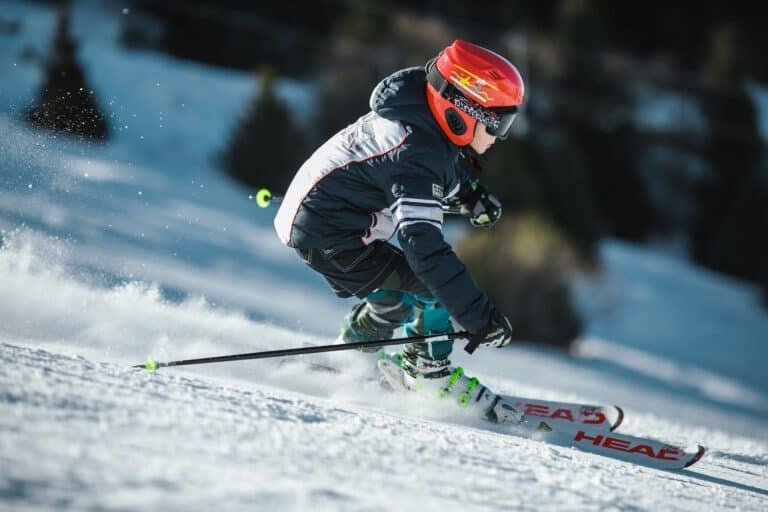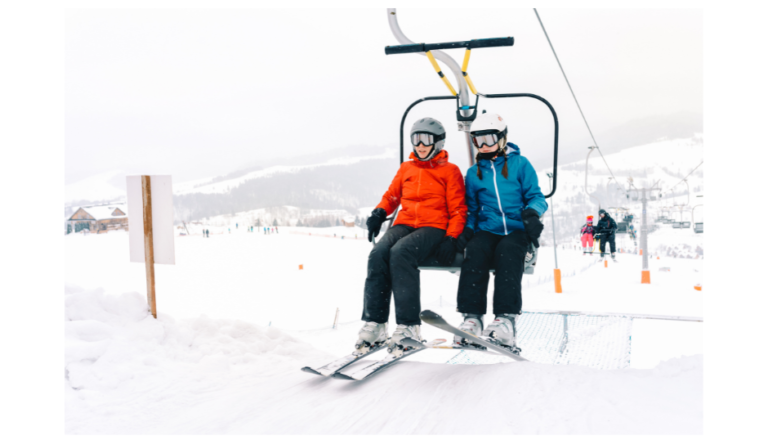Twin Tip Skis: What Are They?

Twin tip skis, which were a big step forward in skiing design, have changed how we ski on the hills and in the park. In the late 20th century, these skis were made as a niche product. They were very different from the usual directional skis that were popular at the time.
The most important thing about twin tip skis is that both the front and back ends are curled up, making them unique. This distinct feature, initially a novelty, quickly became a staple in the skiing community.
The younger generation of skiers and the growing freestyle movement are a big reason why twin tip skis are becoming more common. These skis were great for people who wanted to ski in a fun and active way. Freestyle skiers loved the twin tip design because it made it easier to do turns, jumps, and other moves that were hard to do with regular skis.
In addition to being popular in freestyle skiing, twin tip skis are also very popular in all-mountain skiing. Their flexible form makes it easy to ski backward (switch) and gives them better flotation in powder, making them a popular choice for skiers who crave an all-encompassing mountain experience. Because they can be used on a variety of surfaces, twin tip skis have gone from being a tool only for freestyle skiers to a popular choice among many skiers. This shows their adaptability and all-round capability on varied terrains.
Key Takeaways
So, What Are They Exactly?
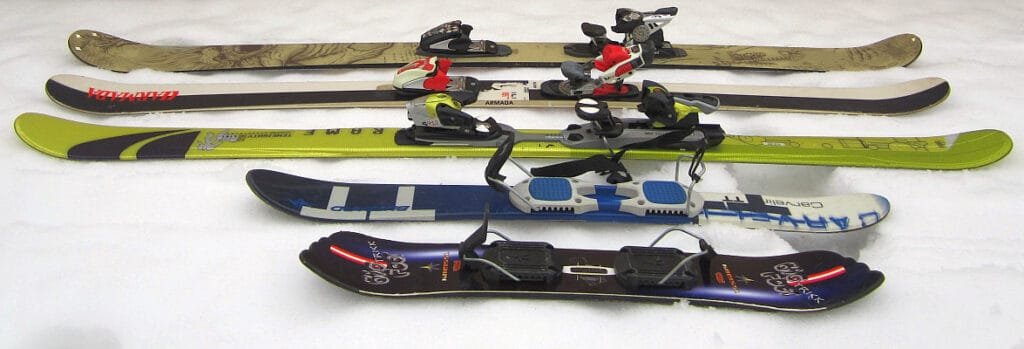
Twin tip skis are distinguished by their unique shape, marked by upturned tips at both the front and rear ends. This symmetry is not just a stylistic choice but serves a functional purpose, allowing skiers to easily launch and land in both forward and backward (switch) positions.
The design enhances maneuverability and enables smoother transitions, particularly in freestyle skiing where jumps and tricks are crucial. Additionally, the uplifted tail ensures that skiers don’t catch the back of their skis in the snow during switch landings or when tackling diverse terrains.
Materials and Construction
The materials used in constructing twin tip skis are key to their performance. Most modern twin tips are made from a core of wood, such as poplar or ash, known for their resilience and flexibility. This core is often layered with materials like fiberglass, carbon fiber, or metal alloys like titanium. These additional layers are engineered to provide the right balance of stiffness and flexibility, crucial for both stability at high speeds and agility in complex maneuvers. The outer layer, or the top sheet, is typically made from durable plastics to withstand the rigors of freestyle skiing and regular mountain use.
Flex and Camber
Flex and camber are two critical aspects in the design of twin tip skis.
Flex refers to the ski’s ability to bend under pressure, which affects how it responds to the skier’s movements. A softer flex is favorable for beginners and freestyle skiers as it allows easier turning and better absorption of impacts from jumps. Stiffer flex suits high-speed skiing and aggressive turns, favored by experienced skiers.
Camber, the slight upward curve in the middle of the ski when it lies on a flat surface, influences the distribution of weight and pressure. Traditional camber skis provide more precise edge control and better power transfer, offering stability during turns and carving.
Some twin tip skis incorporate rocker technology (reverse camber) especially at the tips, allowing for better floatation in powder and ease in initiating turns. This combination of flex, camber, and the ski’s shape culminates in a versatile ski that adapts to a variety of skiing styles and conditions.
Types of Twin Tip Skis
It comes in various types of skis, each tailored to specific skiing styles and conditions. The primary categories include freestyle skis, all-mountain twin tips, and powder twin tips, each designed to excel in different environments.
Freestyle Skis (Park Skis)
If you’re looking for the best park skis, consider freestyle twin tips. These are specifically engineered for park and pipe skiing, where agility and maneuverability are crucial. Being typically shorter and more flexible than other types, freestyle skis allow for easier execution of tricks and jumps, making them a top choice for park enthusiasts.
They often feature a symmetrical shape, meaning the tail and tip have the same width, which provides a balanced feel for riding the switch (backward). The construction usually involves a lighter core and reinforced edges to withstand the impact of rails and jumps. Freestyle skis are the go-to choice for skiers who spend most of their time in terrain parks, seeking skis that are responsive and capable of performing under the demands of aerial tricks and stunts.

All-Mountain Twin Tips
These are the jack-of-all-trades in the twin tip family. All-mountain twin tips are designed to perform well across a variety of conditions and terrains, from groomed runs to light powder and park sessions. They are usually medium in flex, offering a good balance between stiffness for carving on groomers and softness for playful maneuvers in the park. These skis often feature a hybrid camber profile, with traditional camber underfoot for edge grip and stability, and rocker at the tips for better turn initiation and floatation in softer snow. All-mountain twin tips are ideal for skiers who want a versatile ski that can handle a little bit of everything. Armada ARW88 is a good example.
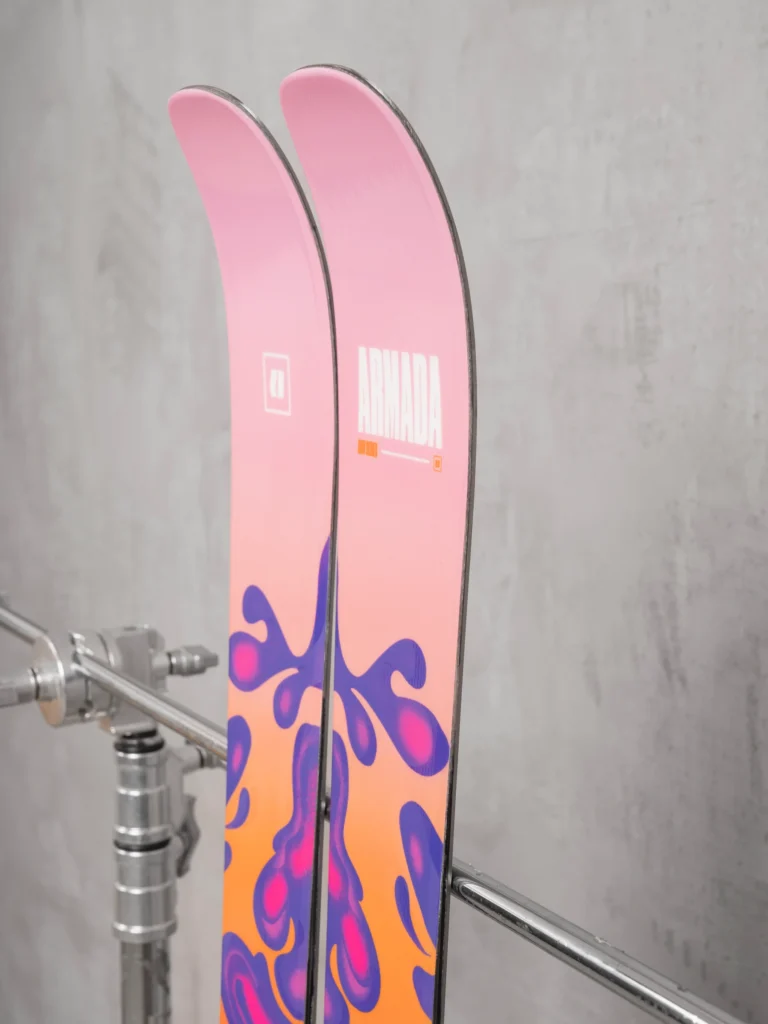
Powder Twin Tips
Powder skis are optimized for deep snow conditions. They are generally wider than other types, providing a larger surface area for better floatation in powder. The tip and tail rocker are more pronounced in powder twin tips, allowing the ski to plane on top of deep snow rather than sinking. Despite their width, modern design and materials keep these skis surprisingly nimble, enabling skiers to make fluid turns and navigate through trees and variable terrain. Powder twin tips are a favorite among skiers who chase deep snow and want a ski that can provide an effortless, surf-like experience in powder.
Icelantic Skis just released 23/24 Nia Pro 105 with beautiful artwork, a collaboration effort their athletes from around the world.
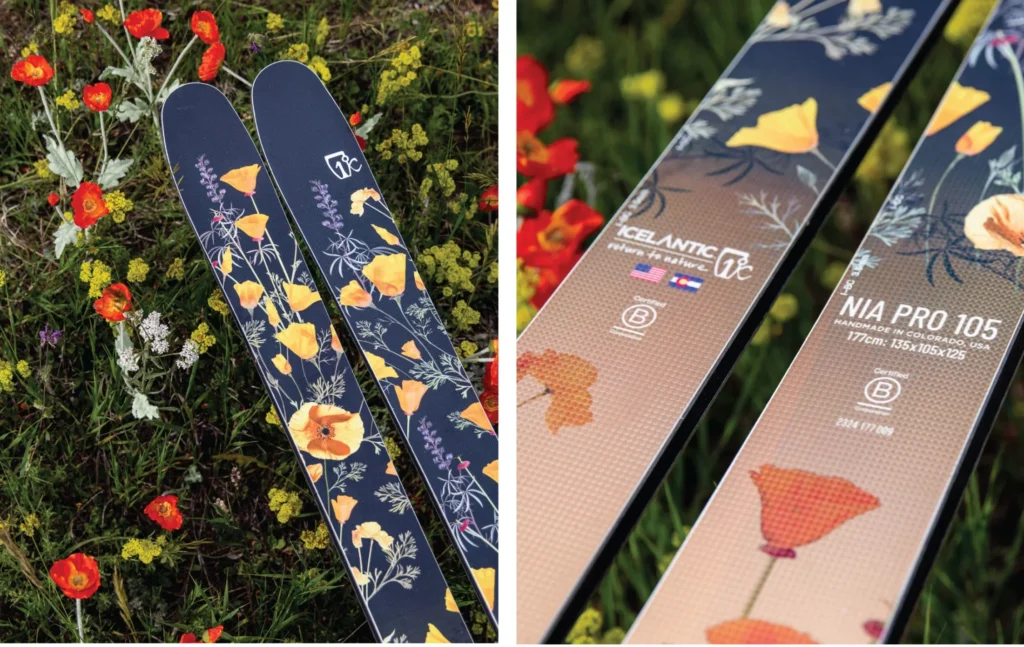
What Are partial twin tips vs. full twin tips?
Full Twin Tips:
- Design: Full twin tip skis have a symmetrical design, with both the tip and tail curved upwards. This symmetry allows for easier and more balanced skiing in both forward and backward (switch) directions.
- Use: Ideal for freestyle skiing, including park and pipe, where tricks, jumps, and switch landings are common. They offer excellent maneuverability and are designed to perform well in terrain parks.
- Characteristics: Often have a central binding mount and a more centered stance to facilitate better balance and control during aerial maneuvers and when skiing switch.
Partial Twin Tips (Directional Twins):
- Design: These skis feature a design that is somewhat between traditional and full twin tips. The tail is slightly raised, but not as much as the tip, and the ski’s profile is not completely symmetrical.
- Use: Suited for skiers who spend most of their time skiing forward but still want some capability to ski switch. They are versatile for all-mountain skiing, offering a balance between performance on groomed runs and freestyle flexibility.
- Characteristics: Tend to have a forward binding mount and a stance that is more traditional compared to full twin tips. They provide better stability at high speeds and more precise control in turns, making them suitable for varied terrain, including powder, groomed runs, and occasional park use.
Full twin tips are ideal for skiers focused on freestyle and park skiing, while partial twin tips (directional twins) offer a blend of all-mountain and freestyle capabilities. The choice depends on your skiing style, the terrain you prefer, and how much emphasis you place on freestyle skiing versus all-mountain versatility.
How To Choose The Right Twin Tip Skis?

1. Consider Your Skill Level:
Beginners: Look for skis with a softer flex, which are more forgiving and easier to control. These skis are usually narrower, providing better stability for those still mastering their technique.
Intermediate Skiers: Opt for medium-flex skis. They offer a balance between maneuverability for turns and stability at higher speeds. They are versatile for a range of snow conditions. Read my article about intermediate ski tips for some noteworthy advice if you would like to advance your level.
Advanced and Expert Skiers: Choose stiffer skis for greater precision and control, especially at higher speeds and in varied terrain. These skis respond well to an experienced skier’s technique.
2. Size and Width Selection:
Length: As a general rule, beginners should choose skis that are shorter in length for better control, typically coming up to somewhere between the chin and the nose. More experienced skiers might prefer longer skis for greater speed and stability.
Width: The width of the ski depends on the type of terrain you plan to ski on. Narrower skis (under 85mm) are better for groomed runs, while wider skis (over 100mm) excel in powder. All-mountain skis usually fall in the middle range (85mm to 100mm) and are versatile for various conditions.
3. Brand and Model Choice:
There are numerous reputable brands in the ski industry, each offering different models catering to various skiing styles and preferences, such as Salomon, K2, and Rossignol.
Consider specific models based on their features. Salomon’s QST series is popular for its all-mountain versatility, while K2’s Poacher model is a favorite among freestyle skiers for its playfulness and responsiveness. Rossignol’s Black Ops series is renowned for its powder performance.
When selecting a brand and model, consider the ski’s specific features, such as the type of core, the materials used, and the ski’s overall profile, and how they align with your skiing style and goals.
Performance and Use
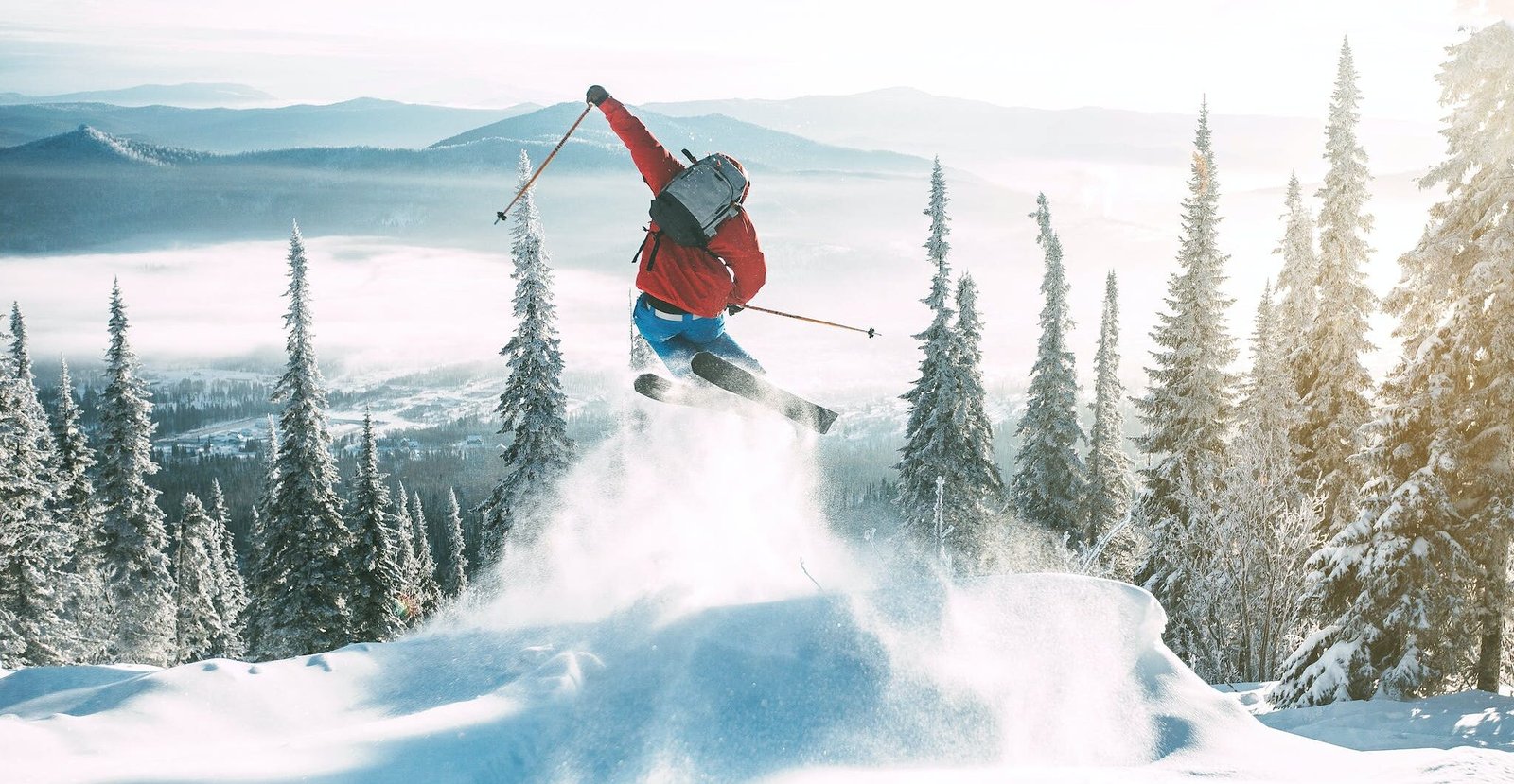
Twin tip skis offer a unique performance profile, catering to diverse skiing conditions and styles, from on-piste precision to off-piste agility.
On-Piste vs. Off-Piste Performance:
- On-Piste: Twin-tip skis perform admirably on groomed runs. Their design, while more freestyle-oriented, still allows for good edge grip and carving ability. Skiers can enjoy a smooth and stable experience on hardpack snow, although they might not match the razor-sharp precision of dedicated on-piste skis.
- Off-Piste: Off-piste, twin tips truly shine. Their wider profile and often rocker design provide excellent flotation in powder. The raised tail helps in navigating through soft snow and makes it easier to pivot and maneuver in tight spots, such as tree skiing.
Freestyle Maneuvers:
- Twin tip skis are designed with freestyle skiing in mind. Their symmetrical shape allows for balanced performance when skiing forward or switching (backward), crucial for landings and take-offs in tricks and jumps. The flexibility and pop of these skis also contribute to their ability to perform in park and pipe scenarios, making aerial maneuvers more accessible and fun.
All-Around Versatility:
- The true appeal of twin tip skis lies in their all-around versatility. They are not just limited to park and freestyle skiing; they offer a balanced experience across various terrains and snow conditions. This adaptability makes them a popular choice for skiers who want one pair of skis that can handle groomed runs, powder days, and occasional forays into freestyle terrain with equal aplomb.
Pros and Cons
Pros of Twin Tip Skis
Cons of Twin Tip Skis
Conclusion
The appeal of twin tip skis lies in their ability to cater to both the adventurous spirit of freestyle enthusiasts and the all-mountain skier seeking a single pair of skis that can handle diverse conditions. While they may not provide the high-speed stability of race skis or the pinpoint carving precision of dedicated on-piste skis, their all-around capabilities make them a popular choice for skiers who value flexibility and fun.
For those considering twin tip skis, it’s important to weigh the pros and cons in light of personal skiing style and preferences. Whether you’re a seasoned park veteran, an all-mountain explorer, or someone who enjoys a bit of both, twin tip skis offer an engaging and enjoyable skiing experience.
FAQs
What makes twin tip skis different from traditional skis?
Twin tip skis are distinct due to their upward curve at both the front and rear ends. This design contrasts with traditional skis, which typically have a raised tip only at the front. The twin tip structure allows for ease in performing tricks, skiing backward, and landing jumps, making them a popular choice for freestyle skiing.
What types of twin tip skis are available and what are their specific uses?
There are several types of twin tip skis, each designed for different skiing styles. Freestyle twin tips are lighter and more flexible for park and pipe skiing. All-mountain twin tips provide versatility for various terrain types. Powder twin tips are wider for better floatation in deep snow. Each type is tailored to specific skiing conditions and preferences.
Who should consider using twin tip skis, and for what kind of skiing activities?
Twin tip skis are ideal for skiers interested in freestyle skiing, including terrain parks and halfpipes. They are also suitable for skiers who enjoy an all-mountain experience and like to incorporate tricks and jumps into their skiing. Beginners can use them as well, but they are particularly popular among intermediate to advanced skiers.
How do the design and construction of twin tip skis enhance their performance?
The design of twin tip skis, with both ends curved upwards, allows for better balance and control when performing tricks and jumps. It also facilitates skiing in both forward and backward (switch) directions. The construction varies based on the intended use, with some being more flexible for tricks and others stiffer for stability at high speeds.


